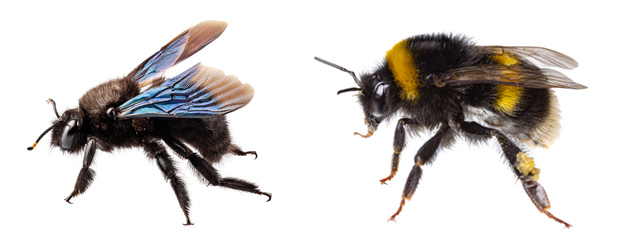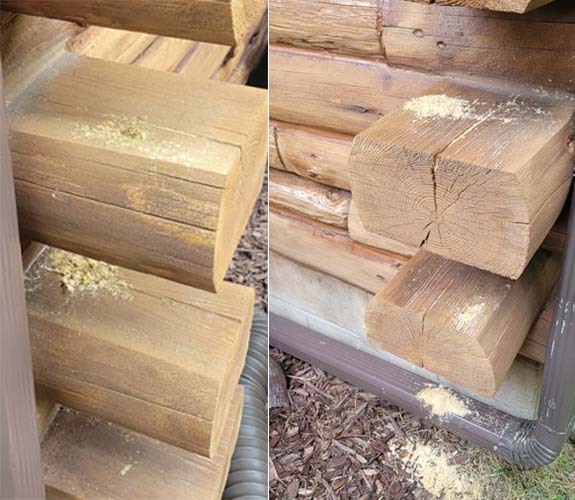Carpenter Bees
In the late-spring and early summer, homeowners often notice robust, large, black bees hovering around the outside of their homes. These are probably carpenter bees searching for mates and favorable sites to construct their nests. Carpenter bees are flying insects with shiny, bare abdomens, often mistaken for bumble bees, that have hairy abdomens with at least some yellow markings. Adult carpenter bees can get up to 3/4-1’’ long. Female carpenter bees build their nest by burrowing 1/4’’ round holes into wood. If you see sawdust piles where there shouldn’t be, inspect the underside of any wood nearby. Male carpenter bees are territorial and are the protectors of their mate and offspring. Males can be very aggressive and may dive bomb or hover close to people near their nest. However, they do not have stingers and therefore cannot sting. Female carpenter bees can sting multiple times but rarely leave their nest.

CARPENTER BEE VS BUMBLE BEE

Click here to learn about our bee, ant, & spider exterior service.
Click here to learn about our bee prevention program.
Pest Info
